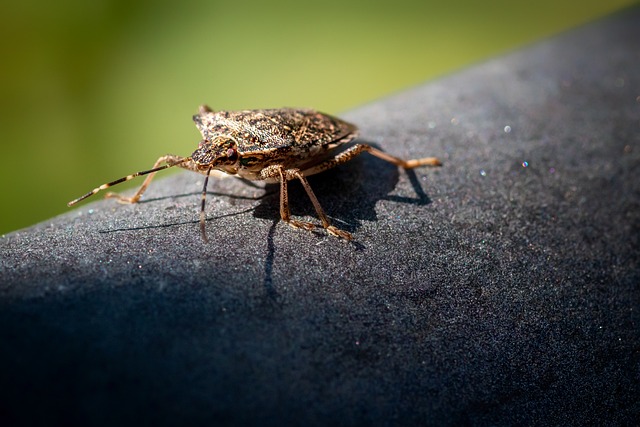Commercial sowbug extermination requires a multi-faceted approach leveraging physical barriers, traditional trapping (sticky traps & bait stations), modern smart traps, eco-friendly methods, and safety protocols. By combining these strategies, commercial spaces can effectively disrupt sowbug activities, protect assets, maintain hygiene, and minimize environmental impact while ensuring the safety of non-target species.
In the realm of commercial space management, effective sowbug control is paramount to maintain a healthy and safe environment. This article explores innovative strategies, from traditional trapping techniques to modern barriers, designed for efficient sowbug extermination in commercial settings. We delve into the behavior and habitat of these pests, providing practical insights for professionals. Additionally, safety and environmental considerations are addressed, ensuring responsible practices in the fight against sowbugs, catering to businesses seeking effective yet sustainable solutions.
Understanding Sowbugs: Behavior and Habitat
Sowbugs, scientifically known as Merisimus species, are small, wingless insects that have become a significant pest in commercial settings due to their tendency to feed on organic matter and cause damage to various materials. Understanding their behavior and habitat is crucial for effective commercial sowbug extermination. These insects are most active during the night, preferring dark and moist environments. They are commonly found in areas with high organic content, such as warehouses, storage facilities, and agricultural buildings. Sowbugs have a unique ability to survive in tight spaces, often hiding in cracks, crevices, and under objects, making their location challenging. Their behavior includes roaming and scavenging for food, which can lead to extensive damage over time.
Knowledge of their habitat allows pest control professionals to implement tailored strategies. Barriers and traps are effective tools in sowbug management. Physical barriers like sealing entry points and using protective covers can prevent their access to sensitive areas. Traps, on the other hand, lure sowbugs with pheromones or bait, providing a non-toxic way to monitor and reduce populations. By combining these methods, commercial exterminators can disrupt sowbug activities and protect valuable assets from potential damage.
Traditional Trapping Techniques for Commercial Spaces
In the realm of commercial sowbug extermination, traditional trapping techniques play a pivotal role in effective pest management. For spaces with high foot traffic and complex structures, such as retail stores, offices, and warehouses, specialized traps are essential tools. These include sticky traps, which are strategically placed along walls and ceilings to capture sowbugs as they move around. The advantage of sticky traps lies in their ability to monitor the extent of an infestation and provide visual evidence for tracking pest activity.
Additionally, commercial spaces often employ bait stations that contain attractive substances to lure sowbugs. These stations are discreetly positioned in areas where pests are most likely to congregate, encouraging them to feed and, ultimately, get trapped. This method not only controls the sowbug population but also helps to prevent future infestations by disrupting their feeding patterns and breeding cycles. Such traditional trapping techniques form a crucial part of a comprehensive commercial sowbug extermination strategy.
Modern Barriers: Innovative Solutions for Long-Term Control
Modern barriers represent innovative solutions in the realm of commercial sowbug extermination, offering long-term control that traditional methods often struggle to match. These advanced traps and barriers utilize cutting-edge technology, such as smart sensors and eco-friendly repellents, to detect and deter sowbugs effectively. By integrating these modern solutions into pest management strategies, businesses can achieve sustained freedom from these persistent pests.
Unlike temporary fixes, these innovative barriers provide a comprehensive approach, targeting not only the existing sowbug population but also preventing future infestations. Their design considers the unique behavior patterns of sowbugs, ensuring targeted and efficient control. This long-term focus is particularly beneficial for commercial spaces, where regular and reliable protection against sowbugs is essential to maintain a hygienic and safe environment.
Safety and Environmental Considerations in Extermination
When employing traps and barriers for commercial sowbug extermination, safety and environmental considerations are paramount. It’s crucial to use products that are both effective and safe for non-target species, including pets, birds, and beneficial insects. Many common sowbug control methods involve pesticides, which can have adverse effects on the ecosystem if not handled properly.
Professional exterminators should always prioritize eco-friendly solutions whenever possible. This includes using baited traps that target sowbugs specifically, avoiding unnecessary chemical applications, and implementing barriers made from non-toxic materials. Additionally, proper disposal of trapped sowbugs is essential to prevent them from returning or causing harm elsewhere.
In conclusion, effective commercial sowbug extermination requires a multifaceted approach. Understanding the behavior and habitat of these pests is crucial for selecting the right strategies, which can range from traditional trapping techniques to modern barriers. For long-term control, innovative barrier solutions prove more sustainable. Always prioritize safety and environmental considerations when implementing any extermination method to ensure a harmonious balance between pest management and ecological preservation.
